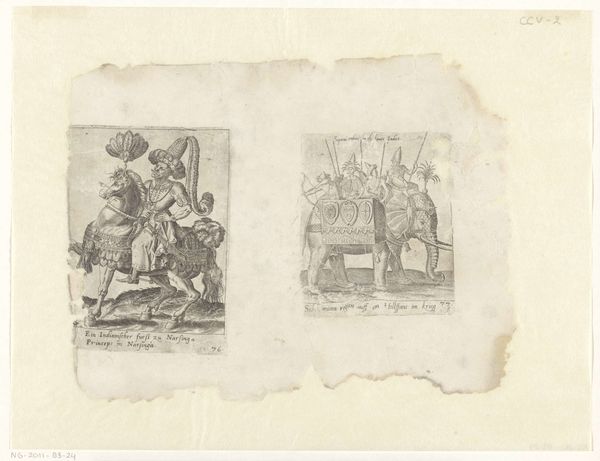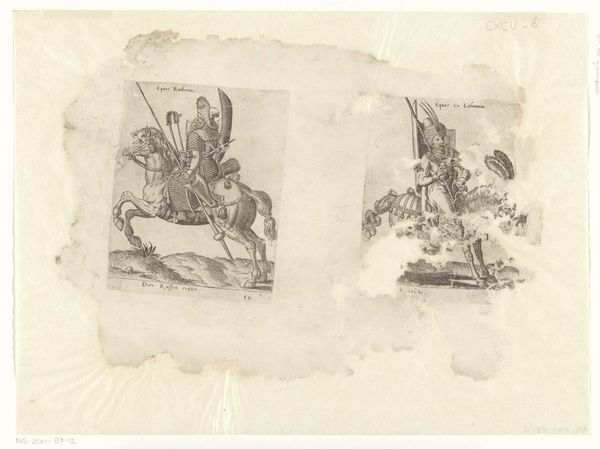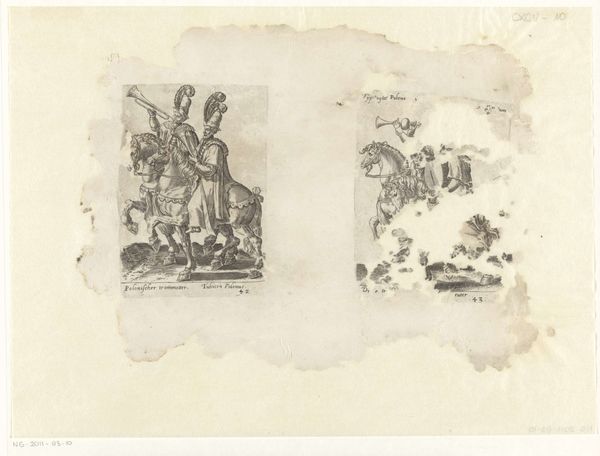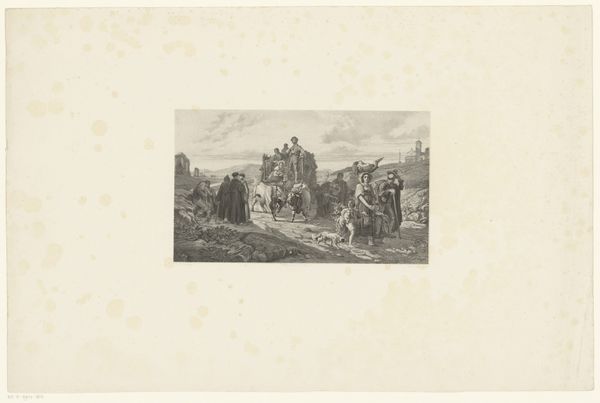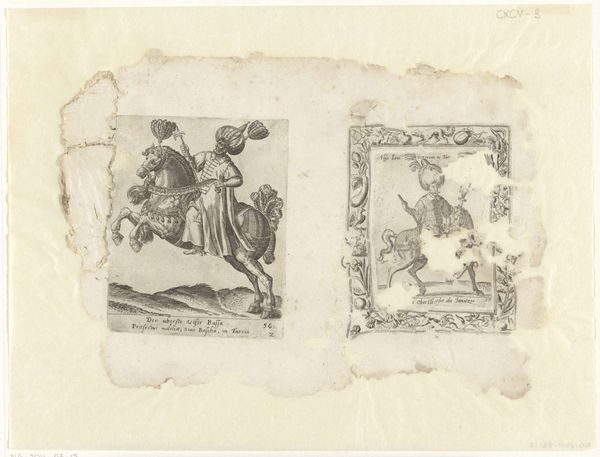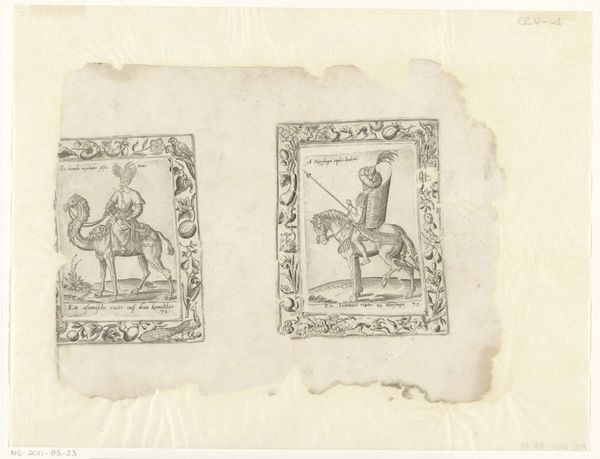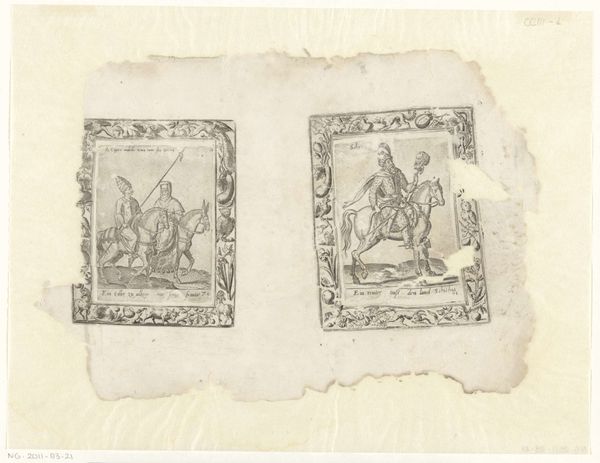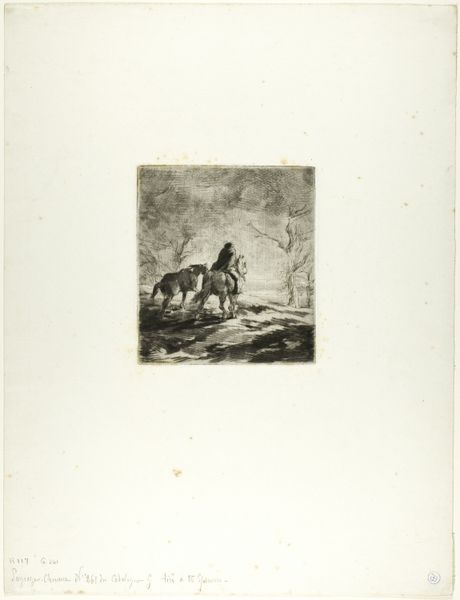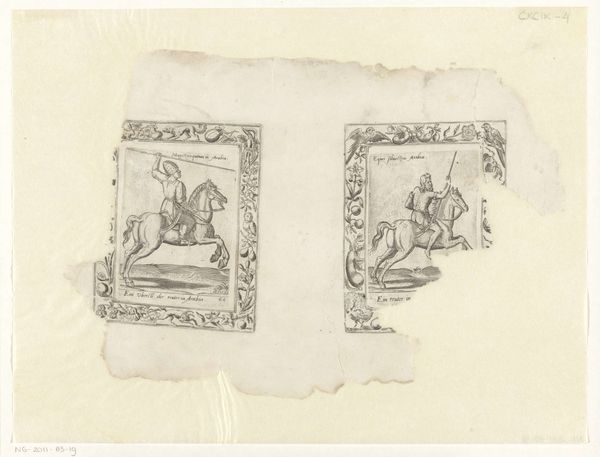
print, engraving
#
portrait
# print
#
figuration
#
11_renaissance
#
genre-painting
#
history-painting
#
northern-renaissance
#
engraving
Dimensions: height 243 mm, width 318 mm
Copyright: Rijks Museum: Open Domain
Editor: This print, "Moskovitische edelman en Moskovitische ruiter" by Abraham de Bruyn, was made sometime between 1576 and 1596. The figures are incredibly detailed. I am especially curious about the material culture implied within this engraving. How do you read the choices de Bruyn made in depicting these figures? Curator: Well, as a print, its reproducibility speaks volumes. Engravings facilitated the spread of information and imagery across geographic and social boundaries. Consider the materials involved: copper plate, paper, ink – all commodities actively traded during the Renaissance. Who had access to these images, and what did owning such prints signify? Editor: So, it's not just about *what* is depicted, but *how* and *to whom* it's distributed? The accessibility is interesting. Curator: Exactly! Think about the social context. The details, painstakingly etched into the copper, translate to a material culture on paper. The labor involved in both creating the print and potentially hand-coloring it connects us to the workshops and economies of the era. Were these images intended as objective ethnographic records or to feed into European fantasies about the exotic "other?" How did the economics of printmaking shape its perspective? Editor: That's a fantastic point – the European gaze and the possible commodification of culture in the image! Curator: Precisely. Also, consider the consumption of these prints. Were they displayed, collected, or used as models for other crafts? Did the process of their production and consumption reinforce existing power structures? It makes you think about the artist's perspective. What was his position? Who commissioned the prints, and what purpose were they meant to serve? Editor: This print is much more than just an image now! I appreciate how thinking about the materials and processes used can completely change my perception. Curator: Indeed, by examining the tangible aspects of art production and consumption, we can gain a deeper understanding of the social and historical forces at play.
Comments
No comments
Be the first to comment and join the conversation on the ultimate creative platform.
